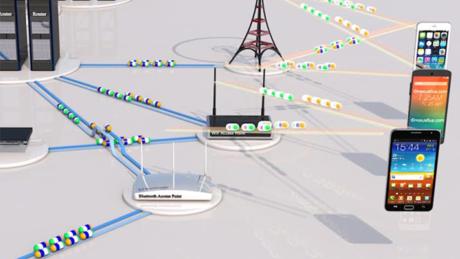
The most popular wireless communication technologies are mobile communication, WLAN (Wireless Local Area Network), and WPAN (Wireless Personal Area Network), which are all included in smartphones. Among WLAN types Wi-Fi is most popular, and among WPAN types Bluetooth is most popular. Therefore, the lectures in this course cover Wi-Fi and Bluetooth specifications.
In addition, the evolution of mobile communication technologies is explained starting from the 1st generation (1G) all the way to the most advanced 4th generation (4G) systems. In addition, further details on the state-of-the-art LTE (Long Term Evolution) and LTE-Advanced 4G mobile communication technologies are presented.
Syllabus
WEEK 1
Bluetooth
Bluetooth is the most popular WPAN (Wireless Personal Area Network) technology and is used in every smartphone that exists. Bluetooth applied on smartphones is also used with A2DP (Advanced Audio Distribution Profile), aptX, EDR (Enhanced Data Rate), and Bluetooth High Speed (HS), which are covered in the lectures. The lectures explain the Bluetooth evolution which starts from Bluetooth 1.0 and evolves into Bluetooth 2.0+EDR, Bluetooth 3.0+HS, and the current state-of-the-art Bluetooth 4.0 (and 4.0 extensions), which can achieve up to 25 Mbps and includes BLE (Bluetooth Low Energy) technology.
WEEK 2
Wi-Fi
Wi-Fi is the most popular WLAN (Wireless Local Area Network) technology and is used in every smartphone that exists. The lectures explain the Wi-Fi Infrastructure Mode based on BSS (Basic Service Set) and ESS (Extended Service Set), and the Wi-Fi Ad-Hoc Mode based on IBSS (Independent Basic Service Set). Then the details of the IEEE 802.11 Network and PHY Standards for 802.11a, 802.11b, 802.11g, 802.11n, 802.11ac, and 802.11ad specifications based on frequency, bandwidth, and data rate are presented.
WEEK 3
Mobile Communications
In these lectures, the evolution of mobile communication technologies is explained starting from the 1st generation (1G) all the way to the most advanced 4th generation (4G) systems. But first, some of the essential technical fundamentals on mobile communication Downlink & Uplink and Handover are described. The lectures on Mobile Communications Evolution start with the 1st Generation (1G) AMPS, and then continue on to 2nd Generation (2G) systems GSM and IS-95 (cdmaOne), 3rd Generation (3G) systems UMTS (WCDMA) and CDMA2000, and 4th Generation (4G) LTE-Advanced systems. Details on SIM (Subscriber Identity Module) and other inter-generation evolution technologies such as HSPA (High-Speed Packet Access) and LTE (Long-Term Evolution) are also explained.
WEEK 4
LTE & LTE-A
Following the lectures on evolution of mobile communication technologies, the lectures in this module focus of the new technologies applied in the state-of-the-art LTE (Long Term Evolution) and LTE-A (LTE-Advanced) 4G mobile communication systems. First, the LTE and LTE-A Requirements and 3GPP Specifications are presented. Then, the LTE Architecture based on EPC Elements is presented followed by LTE Components such as OFDM, OFDMA, MIMO & Precoding, Handover & Packet Forwarding, and MBMS are explained. Next, the lectures on LTE-A covers ICIC and FFR, DSA, CoMP, CA, HetNet, Small Cells, and SON, which are the main technologies that enable LTE-A to perform at such high levels.
Graded: LTE & LTE-A Quiz
WEEK 5
Outro
